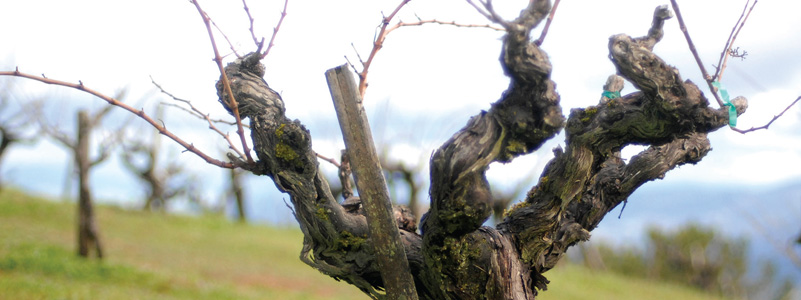

Among those who pay close attention to the foods that sustain them, supporting indigenous crops and eating local have become two contemporary fashions. In wine, drinking indigenous would mean giving up pinot noir for norton (a variety of vitis aestivalis), which I’m not yet ready to do. And yet someday I may find the cultural prejudice in that stance, as Luke Sykora and I have found in two memes surrounding old vines.
Those of us who have walked among California’s old-vine plantings of zinfandel and its drought-resistant companions tend to make a connection between those vines and the resonant wines their grapes produce. In fact, “old-vine complexity” has become a flavor description, one we often use in blind tastings, only to find out the wine at hand comes from relatively young vines. We’ve discovered a number of these wines over the past few months, recommending them highly in the tasting section of this issue. So Luke Sykora began to rethink any blanket assumptions about old vines and zinfandel. Some of the historic, centenarian plantings of zinfandel and mixed blacks in California are treasures that continue to produce great wines, but greatness is not merely a matter of vine age. While researching his article, “Zin, Reincarnated,” he found a number of new classics where zinfandel has pride of place.
There’s a different sort of old-vine meme repeated along the Pacific coast of Chile, this one more dismissive. País, the grape we know as mission in California, was brought by Spanish Jesuits as they travelled up the American coast. It was an early invasion of vitis vinifera, in territories where its cousins from Bordeaux and Burgundy have since taken root. Today, this drought-tolerant grape is widely considered irrelevant in an era of drip irrigation, a rustic workhorse used for bulk wine in both Chile and California.
In Chile’s south, however, ancient communities of vines still exist, some, perhaps, from the original plantings of 1583. Whatever losses they su ered above ground have been replaced by shoots from neighboring vines; their root systems below ground have more than four centuries of development. Small pockets of these vines, sustained by the soils and climates that accommodate país best, produce some of the most distinctive wines in the New World. I had never traveled to the south to taste them until this past November, having taken the word of most everyone in latitudes north of Concepción and Cauquenes when they told me, “País is trash.” I have since been humbled.
These unsulfured wines do not travel well; at least not yet. Many are rustic. But the beauties among them are undeniable. I can still taste them, and I am already planning my return.


This story appears in the print issue of February 2015.
Like what you read? Subscribe today.















